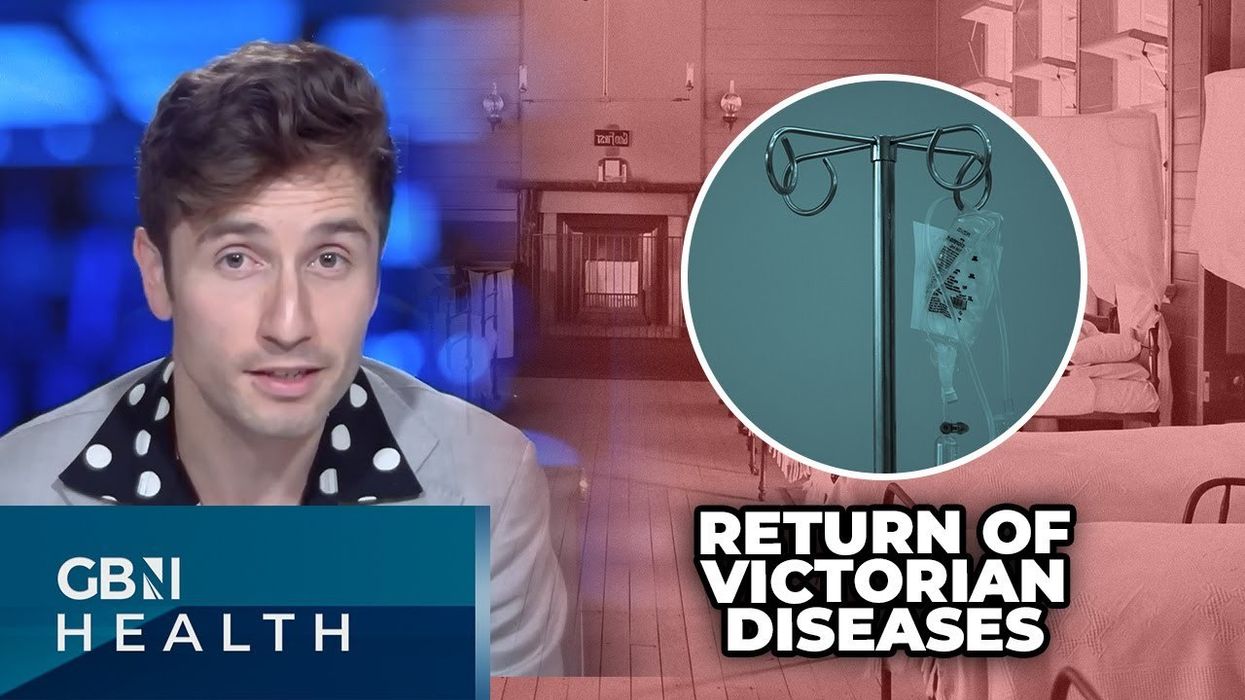Victorian-era diseases that killed MILLIONS back in Britain as health experts sound urgent alarm

A trifecta of problems is thought to be driving this resurgence
Don't Miss
Most Read
Victorian-era diseases have returned to Britain as plummeting vaccination rates, malnutrition and cuts to public health spending derail decades of progress.
Take scabies - a common disease in Victorian workhouses, where those with scabies were segregated in separate "itch" wards.
NHS figures reveal a staggering increase in the parasitic skin infestation, with 3,689 cases diagnosed in hospitals in England in the year to April, up from 2,128 the previous year.
Days before, doctors in the journal BMJ Case Report warned scurvy may be re-emerging after treating a middle-aged man with the condition.

Measles is very contagious and can cause serious complications such as swelling in the brain
| GETTYThe disease of the past causes a slew of disturbing symptoms such as bleeding gums and skin discolouration.
Scurvy is still relatively rare in the UK - just 171 cases were reported last year - but this is a significant jump on 2007-8 when only 63 cases were reported.
Cases of the sexually transmitted disease syphilis are skyrocketing.
The number of heterosexual men in the region diagnosed with the sexually transmitted infection soared 149 per cent between 2021 and 2023, the highest increase in England.
The number of heterosexual women with the condition also rose by 121 per cent during this period.
Childhood infectious diseases, including measles and whooping cough, are also on the rise.
There have been nine reported deaths of infants from whooping cough in England since November last year, while the latest figures from the UK Health Security Agency show 12,200 confirmed cases between January and July 2024.
Since January, there have been 2,465 confirmed measles cases reported in England. Measles is very contagious and can cause serious complications such as swelling in the brain.
Meanwhile, rates of tuberculosis (TB), which killed one in seven people in England at the dawn of the 19th century, are creeping up.
The latest provisional data from UKHSA shows:
- TB notifications increased by 7.5 per cent in the first quarter of 2024, compared with the same quarter in 2023
- There was an 11.2 per cent rise in TB notifications in the updated 2023 figures compared with 2022, rebounding to above the pre-COVID-19 pandemic numbers in 2019.
- Increases in TB notifications in quarter one, 2024 compared with quarter one, 2023 were unevenly distributed across regions in England.
Why are Victorian-era diseases making a comeback?
Diseases of the past are roaring back to life thanks to declining vaccination rates, poor diets and cuts to public health budgets.
Take the decline in vaccination rates.
The whooping cough (pertussis) vaccine is offered to all pregnant women between 16 and 32 weeks of pregnancy to protect their babies, but most recent figures suggest uptake is around just 60 per cent.
Meanwhile, data also shows World Health Organisation targets of 95 per cent vaccine coverage for under-fives are being missed in England, including the six-in-one jab which protects against whooping cough, polio and tetanus, as well as the measles, mumps and rubella vaccine.
Backlogs caused by the pandemic are also thought to be driving up rates.
The jump in figures in tuberculosis, for example, partly reflects a rebound in access to the diagnosis and treatment of TB following serious setbacks during the pandemic.
LATEST HEALTH DEVELOPMENTS

Whooping cough vaccine uptake is around just 60 per cent
| Getty ImagesThe cost of living crisis also makes it harder for families to afford good quality nutritious food, which in turn leaves people vulnerable to disease.
The middle-aged man treated for scurvy, for example, stopped taking nutritional supplements prescribed for him after previous weight-loss surgery, because he said he couldn't afford them.
Blood tests to assess his general nutritional status indicated no detectable levels of vitamin C and he was also deficient in other key nutrients.
Public health services in the UK are also facing significant challenges due to funding cuts over the past decade.
The public health grant, allocated by the Department of Health to local authorities for preventative health services, has seen a substantial decrease of 28 per cent in real terms since 2015.
This reduction in resources has left many essential services, such as sexual health clinics, struggling to provide adequate testing and treatment.
Professor Sir Chris Whitty, the chief medical officer, has highlighted the link between the surge in sexually transmitted infections (STIs) and the decline in public health funding. He warned MPs about the dangers of syphilis, emphasising its potential for multiple complications.
The impact of these budget constraints extends beyond sexual health services. NHS services and GP surgeries are also feeling the strain, contributing to falling vaccination rates for infectious childhood diseases.
Councils have raised alarms about the dire state of public health services, describing them as being at "breaking point" due to the lack of funds for crucial testing and treatment programmes.











